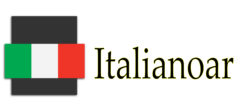The United States is facing the greatest lack of healthcare practitioners in our country’s record which can be compounded by an rising geriatric population. In 2005 there endured one geriatrician for each 5,000 US citizens around 65 and just eight of the 145 medical colleges experienced geriatricians. By 2020 the industry is projected to be short 200,000 physicians and around a million nurses. Never, in the history of US healthcare, has so much been needed with very few personnel. As a result of this shortage combined with the geriatric population increase, the medical neighborhood needs to discover a way to provide regular, appropriate information to those who want it in a standard fashion. Envision if flight controllers spoke the indigenous language of these place rather than the current global journey language, English. That case catches the desperation and important nature of our significance of standardized connection in healthcare. A healthy information trade will help increase protection, lower length of clinic remains, cut down on medicine mistakes, minimize redundancies in lab screening or techniques and make medical program quicker, thinner and more productive. The ageing US population along with these impacted by serious illness like diabetes, cardiovascular illness and asthma should see more specialists who will need to find a way to speak with primary treatment suppliers efficiently and efficiently.
This effectiveness can only just be achieved by standardizing the way the interaction takes place. Healthbridge, a Cincinnati based HIE and one of many greatest community centered sites, was able to reduce their potential illness outbreaks from 5 to 8 days down to 48 hours with a local health data exchange. Regarding standardization, one writer observed, “Interoperability without standards is much like language without grammar. In equally cases transmission may be achieved but the process is complicated and often ineffective.”
United Claims shops transitioned around twenty years before in order to automate stock, sales, accounting regulates which all increase performance and effectiveness. While uncomfortable to think about people as stock, probably it’s been element of the cause of the lack of change in the primary treatment setting to automation of individual records and data. Imagine a Mother & Place hardware store on any sq in middle America packed with catalog on cabinets, purchasing copy widgets based on not enough information regarding recent inventory. Visualize any House Site or Lowes and you get a view of how automation has changed the retail sector in terms of scalability and efficiency. Possibly megagangnam.com of medicine” is just a barrier to more successful, successful and smarter medicine. Criteria in data change have endured since 1989, but new interfaces have developed more fast thanks to raises in standardization of regional and state health data exchanges.
In the United States one of the earliest HIE’s started in Portland Maine. HealthInfoNet is really a public-private alliance and is believed to be the largest statewide HIE. The objectives of the system are to boost patient security, improve the quality of clinical care, raise efficiency, lower service duplication, identify community threats more quickly and grow patient history access. The four founding communities the Maine Wellness Entry Base, Maine CDC, The Maine Quality Forum and Maine Wellness Data Center (Onpoint Health Data) began their attempts in 2004.
In Tennessee Local Wellness Data Organizations (RHIO’s) started in Memphis and the Tri Cities region. Carespark, a 501(3)c, in the Tri Towns place was regarded a primary challenge wherever clinicians interact right together applying Carespark’s HL7 compliant program as an intermediary to turn the information bi-directionally. Experts Affairs (VA) clinics also performed an essential role in the early phases of developing that network. In the delta the midsouth eHealth Alliance is just a RHIO joining Memphis hospitals like Baptist Memorial (5 sites), Methodist Methods, Lebonheur Healthcare, Memphis Children’s Center, St. Francis Health Process, E Jude, The Regional Medical Middle and UT Medical. These local networks let practitioners to generally share medical files, research values medicines and different studies in a more efficient manner.
Seventeen US neighborhoods have already been specified as Beacon Towns throughout the United Claims based on their development of HIE’s. These communities’ wellness concentration ranges based on the patient population and prevalence of persistent illness states i.e. cvd, diabetes, asthma. The areas focus on unique and measurable improvements in quality, safety and effectiveness because of health data change improvements. The best geographical Beacon community to Tennessee, in Byhalia, Mississippi, only south of Memphis, was given a $100,000 grant by the office of Wellness and Human Companies in September 2011.
A healthcare model for Nashville to replicate is situated in Indianapolis, IN predicated on geographical closeness, city measurement and citizenry demographics. Four Beacon awards have already been given to areas in and about Indianapolis, Wellness and Hospital Company of Marion County, Indiana Health Centers Inc, Raphael Wellness Center and Shalom Health Care Center Inc. In addition, Indiana Health Data Engineering Inc has received over 23 million pounds in grants through the State HIE Cooperative Contract and 2011 HIE Problem Give Supplement programs through the federal government. These prizes were based on the subsequent conditions:1) Reaching wellness objectives through wellness information trade 2) Improving long haul and article intense care transitions 3) Customer mediated data exchange 4) Allowing enhanced issue for individual attention 5) Fostering distributed population-level analytics.
italianoar
And on the eighth day, god created online business.
